
The New Zealand kaka (Nestor meridionalis) is one of the most fascinating of all parrots due to its appealing appearance and behaviour and unusual vocalizations. Its alternative name of “brown parrot” suggests a dull-coloured bird, but nothing could be further from the truth.
The intricacy of its plumage is like a work of art. There are countless shades of brown, grey and tawny brown, every feather being margined with a slightly darker colour. The feathers of the sides and rump are brown, margined with red. In contrast, the forehead is white, the ear coverts are orange and the underwing coverts are red. It is truly a beautiful parrot! The North Island subspecies (N. m. septentrionalis) is duller in plumage.
Kaka on Kapiti
Kaka are rare in native forest throughout the three main islands (North, South and Stewart) of New Zealand, except for areas adjacent to offshore island strongholds, such as Little Barrier, Kapiti, Ulva and Codfish islands. They have recovered at some sites where control of mammalian predators is undertaken, such as Waitutu in Fiordland National Park.
In 1993 I was fortunate to see kaka on Kapiti Island. This is a Department of Conservation (DOC) reserve which lies 5km (3 miles) off North Island’s west coast. During the 1840s farming commenced and cattle, sheep, pigs, deer, dogs and cats were introduced. Rats were already well established and in 1892 the Australian brush-tailed possum (Trichosurus vulpecula) was introduced to establish a fur trade. The damage caused by these mammals was incalculable.
This story is from the October 16, 2019 edition of Cage & Aviary Birds.
Start your 7-day Magzter GOLD free trial to access thousands of curated premium stories, and 9,000+ magazines and newspapers.
Already a subscriber ? Sign In
This story is from the October 16, 2019 edition of Cage & Aviary Birds.
Start your 7-day Magzter GOLD free trial to access thousands of curated premium stories, and 9,000+ magazines and newspapers.
Already a subscriber? Sign In
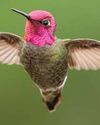
The World's Best-Known Hummingbird?
Intensively studied, the gem-like Anna’s hummingbird is a welcome visitor to the gardens of America’s most populous state: California. Bill Naylor investigates its life history
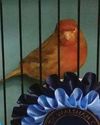
The charm of the English Cinnamon
Despite its long and complicated history, the true Cinnamon canary is still with us – in the hands of a tiny group of breeders. DONALD SKINNER-REID reckons it deserves wider appreciation
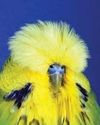
Spangles: a personal overview
FRED WRIGHT relates a budgie story of over-exploitation, consequent problems and abundant potential for the future

New converts to old breeds
Old and rare canaries have a reputation for adding fresh interest and challenge to the hobby. PETE HOOK and NICK JOY agree, and explain the birds’ charm to Dave Brown

Themed aviaries are a hit with the public at annual Stafford show
DECORATIVE AVIARY DISPLAYS from a CBS and an online bird keeping advice group were voted in the top three by visitors for the inaugural Stafford Aviary Competition.
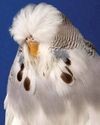
Pieds with potential
More than just a lesser variety, the dominant pied will introduce challenge and change into most studs, reckons CLIVE WAKEMAN. Here he discusses pairings to try and others to avoid

Club News
Welcome to the club and show pages – the bit that’s all about you Results: convention, specialist & rare and Breeder of the Year

Canaries Month by Month:
With Christmas around the corner, BRIAN KEENAN is well into his winter programme, and reckons he might deserve a nice outcross
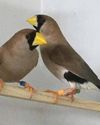
Smart Choice, Docile Nature
Dave Brown welcomes the masked grassfinch to his birdroom and shares advice on this lovely Australian species
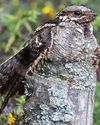
The truth about the ‘flying toad'
Odd local names and weird superstitions can’t hide the beauty and elegance of the nightjar, a species that has made a fascinating subject in a few zoo collections, reveals BILL NAYLOR